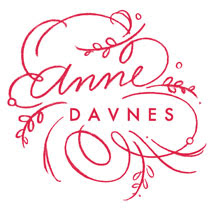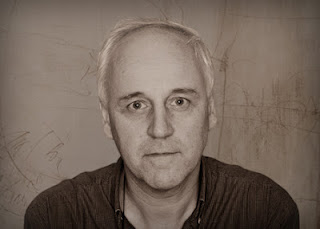An Interview with Yves Leterme: What turns him On, Off, Inward & Forward.
In preparation for our next Atlanta Penablers meeting on October 5th, calligrapher Yves Letermehas generously given us some compelling thoughts to ponder.
After reading, we dare you not to sign up for his Italic Variations workshop on October 6th & 7th. There are still a few seats left!
============================================
Anne Elser: What is your favorite word?
Yves Leterme: Wabi-Sabi – the subtle beauty of imperfection.
AE: What is you least favorite word?
YL: Vakoverschrijdende eindtermen – you probably don’t understand: it’s a long story… think of useless documents one has to fill in.
AE: Describe your earliest memory of feeling your first creative spark.
YL: I honestly can’t remember, probably because I wasn’t creative at all as a young boy. I was much better in consuming art: reading books, listening to music, watching movies… come to think of it, I wouldn’t call myself “a creative nature” even now: I need a push, definitely, but once I’ve pushed myself into creating something, I keep going.
AE: What turns you on?
YL: A piece of good music, a well-written and enjoyable book, stunning artwork, a beautiful and classy lady, a clever conversation, a captivating movie or TVseries, an act of sheer friendliness, gorgeous architecture, a peaceful rustic scene… ah, so many things
AE: What turns you off?
YL: The opposite of all that… in one word: vulgarity (which includes most graffiti, especially ‘tags’).
AE: If you could use just one word to describe Gestural Writing, what would it be?
YL: Sprezzatura, the Italian word for ‘studied nonchalance‘.
AE: How has your experience teaching classical languages influenced your calligraphic work?
YL: I think the study of classical languages has taught me to develop an eye for detail, it has also shaped my taste for good literature, a sense for the right proportions and in general a suspicious attitude towards things that go too easily.
AE: What do you love most about teaching?
YL: I especially enjoy those moments when you sense the students are following your train of thought and are willing to go along because they recognize your struggle with the same issues. Preparing and giving a workshop also forces you to question all theories you held on to for a long time. Seeing how the students interpret your information can be beneficial for the teacher also for it can open new ways he hadn’t thought of before. In other words, one has to keep his eyes and mind open at all times.
AE: What sound or noise do you love?
YL: The sound of nature when walking through woods.
AE: What sound or noise do you hate?
YL: I absolutely detest the noise of motorcycles, scooters, tuned up cars, etc… I can’t understand why people need to make more of that dreadful noise than necessary in order to prove they exist.
AE: What advice do you have to creatives about what to do when they get “stuck?”
YL: Question everything you do… why that tool ? why those texts ? why that small ? why that colour ? why that interlinear space ? And have the courage to change everything…
AE: What music (genre and/or composer) inspires you most?
YL: No doubt about this one: Elvis Costello. Clever texts, lots of different styles, great performer, boundless energy…
AE: What fine art (genre and/or artist) inspires you most?
YL: Abstract expressionism. And the calligraphy of my teacher Brody Neuenschwander.
AE: What profession other than your own would you like to attempt?
YL: I truly don’t know – I’m perfectly happy being a calligrapher and teacher of Latin.
AE: What profession would you not like to do?
YL: Anything that has to do with bookkeeping and economics.
AE: In many of your pieces, I see a recurrent echo of rectangular shapes, scattered neatly in a horizontal format across the page. Sometimes they are picture boxes, sometimes the shapes hold letterforms, or are left blank. They are beautiful. What are they and where do they come from/what inspired them?
YL: They’re mainly there for design purposes, a repetitive thing that I put there to create unity or to apply some structure to the whole design. I’m aware of my inclination to do that and sometimes I refrain from doing it (or I try), but then… is it so bad to have a recognizable feature ?
AE: I heard once that a painter often produces work that evokes the same quality of light that their environment produces. In comparing your own workspace and environment – could you say they are similar?
YL: Not really. I deliberately use a wide variety of colours and tones – it has even nothing to do with the way I feel at that time – it’s just part of my approach to change my way of working. I can make very dark pictures when I have not a worry in the world.
AE: If Heaven exists, what would you like to hear God say when you arrive at the Pearly Gates?
YL: “I haven’t exactly spoiled you with an abundance of talents, my son, but you did fine with the leftovers I’ve thrown in your lap. I noticed quite a few people enjoyed your workshops and works, so you must have spread some happiness around -which was the whole point of you being a mere calligrapher. That should make you happy yourself, no ? “
============================================
 Atlanta Penablers meeting “Movement, Marks and Meaning.” From the art of abstraction, to the emotive tug of calligraphic lettering, Yves Leterme (as layered with shimmering depth as his pieces,) has much to share about his techniques, inspiration, and inner wisdom. Come for his interview, demonstration, slide show, and audience Q&A. Yves will also be bringing some of his original works of art for view and purchase. Squee!
Atlanta Penablers meeting “Movement, Marks and Meaning.” From the art of abstraction, to the emotive tug of calligraphic lettering, Yves Leterme (as layered with shimmering depth as his pieces,) has much to share about his techniques, inspiration, and inner wisdom. Come for his interview, demonstration, slide show, and audience Q&A. Yves will also be bringing some of his original works of art for view and purchase. Squee!
When: Sat & Sun, Friday October 5th, 2012 6-8PM
Where: The Binders Art School in Buckhead
What to bring : A drink or snack to share and yo bad Self.
When: Sat & Sun, October 6th & 7th, 2012
Where: The Binders Art School in Buckhead
What to bring : After signing up online for Italic Variations workshop through the Binders Art School site, a supply list will be sento to you.


